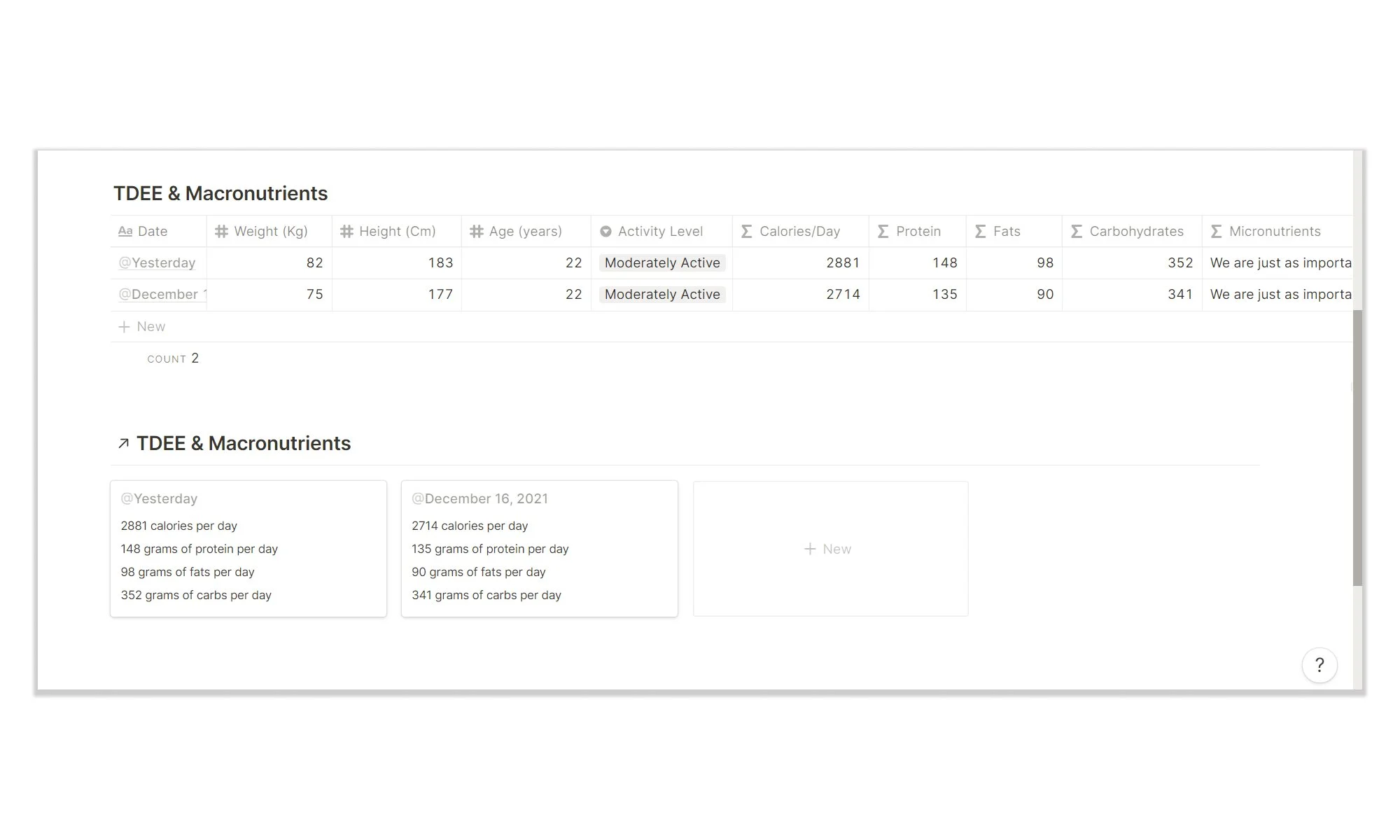How to Calculate Calories and Macronutrients in Notion - Notion Nutrition Calculator
You can duplicate the Notion template here.
Nutrition is a science and practice that has risen in popularity over the past decade. At its core, nutrition means nourishing the body to live a healthy life. Ideally, nutrition improves your health, instead of diminishing it. But it appears there is a trade-off nowadays between healthy food and palatable foods. The concept of healthy food is rather abstract and subjective. The primary metric of proper nutrition is calories, followed by macronutrients. Ultimately, how many calories you eat per day matters the most. The amount of calories you eat determines whether you are in a calorie surplus or deficit (or maintenance). That makes the difference between gaining weight, losing weight, or maintaining the same weight over time. There are certainly other activity-related factors that are part of the equation. NEAT is one of them. Non-exercise activity thermogenesis (NEAT) refers to how many calories you burn when not training (i.e., during your normal day, when you are not working out). Some people tend to burn more calories during the day than others. This has to do with the amount of movement you do outside of your training practice, and what is your basal metabolic rate (i.e., your propensity to consume calories for maintaining your bodily functions). These parameters vary on an individual basis.
This post focuses on calories and macronutrients, how to calculate them, and how to keep track of them. This actionable Notion template allows you to input your personal data to calculate your own nutrition metrics accurately over time, following the Mifflin-St.Jeor equation.
How to calculate calories and macronutrients
Finding out your TDEE (total daily energy expenditure) and calories needed for maintenance is a process that follows some clear steps. One of the most reliable methods of calculating your TDEE is the Mifflin-St. Jeor equation. This method utilizes some basic physiological parameters to determine your maintenance calories. There is a margin of error, but this equation is considered one of the most accurate when calculating your TDEE. Margins of errors in nutrition can be nullified through consistent, deliberate, and patient trial and error over time. Nutrition is a long-term game, similar to business. Below you can find the necessary steps to find out your TDEE, together with a free Notion system you can duplicate in order to calculate your personal TDEE.
Start from your weight and height
The Mifflin-St.Jeor equation uses metric units. So, if you are not aware of your height and weight in Centimeters and Kilograms, you can use this online conversion tool, or the converter that is included in the Notion template below.
Use the Mifflin-St. Jeor equation to calculate calories for maintenance
Calculate protein and fats first
Deduct carbs from remaining calories
Adjust amounts to fit your goal (i.e., diminish calories if the goal is fat loss)
Begin tracking calories. This will bring awareness on how far you are from the numerical markers.
Adjust accordingly and set up a sustainable eating regimen realistically fitting into your lifestyle
I could have delved into each point above more in-depth, but I decided to show instead of telling (as the saying goes in design). So, below you can find an explanation video of the Notion “Nutrition Calculator” and how it works. If you have any questions, you will find a link to contact me at the bottom of the Notion template. Thank you for reading.
If you find this post valuable, you may consider signing up to our weekly newsletter, The Weekly Reflection, where I discuss topics ranging from psychology to philosophy and fitness. You can check out previous newsletter issues here.

